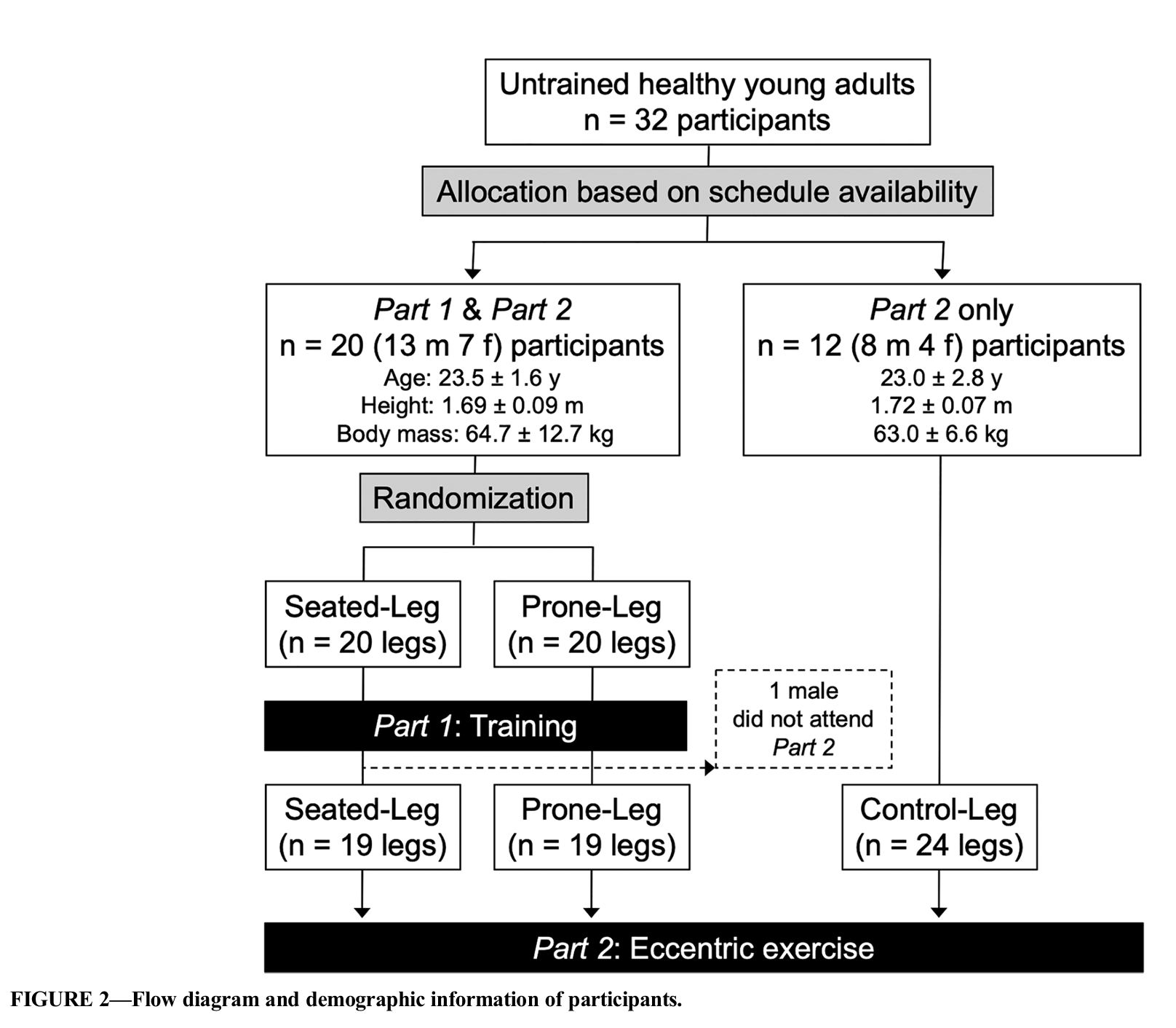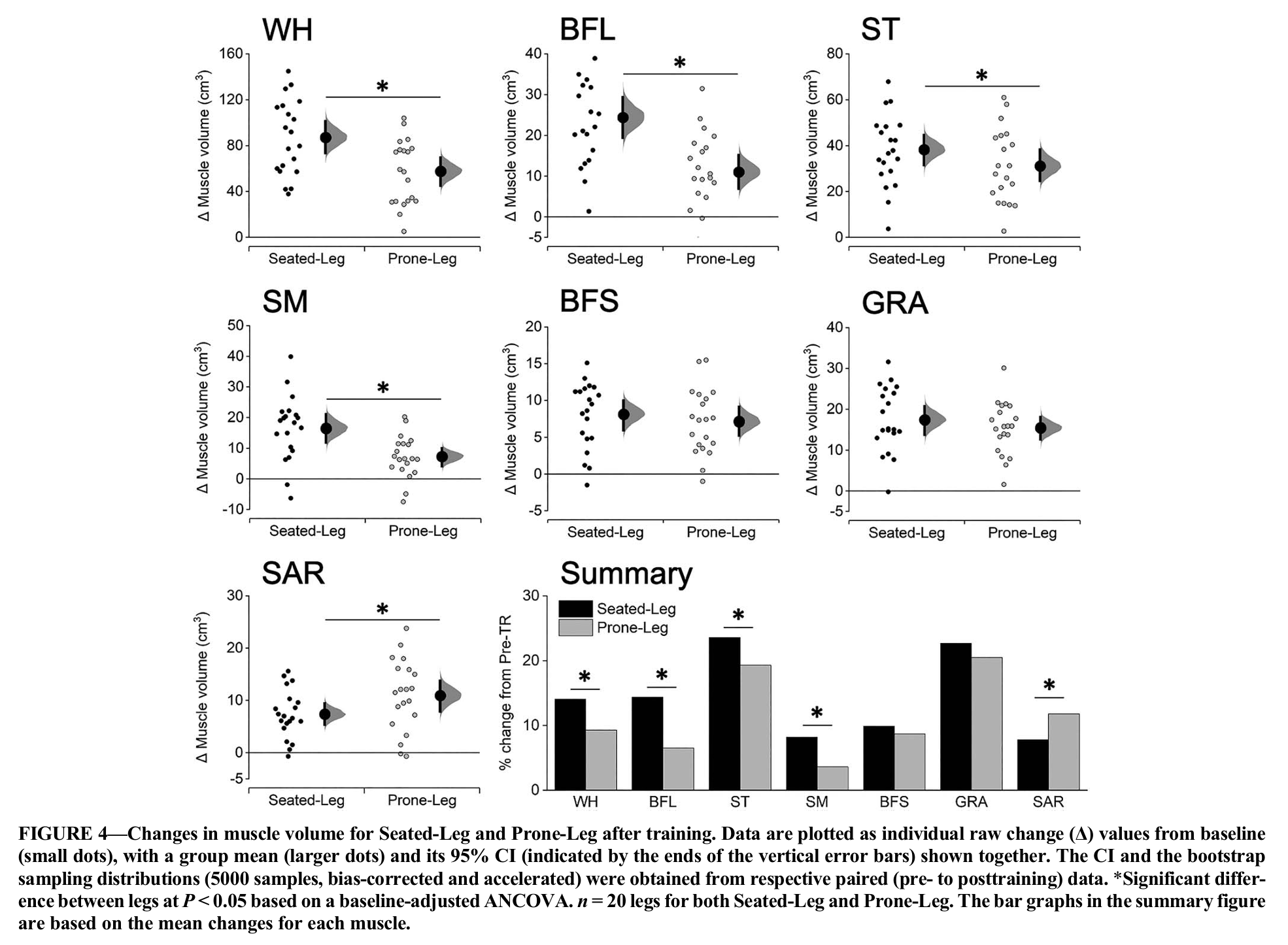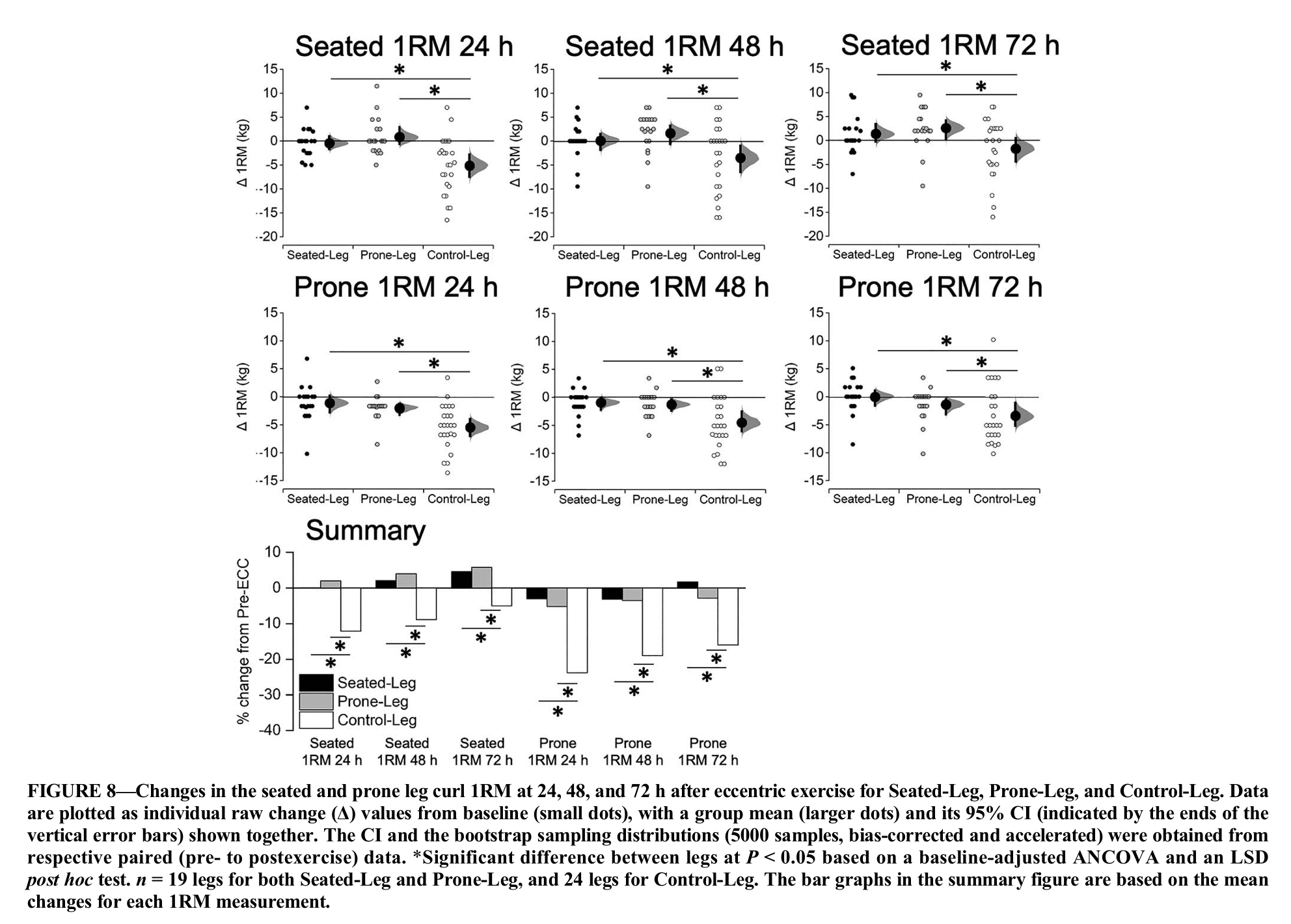Hamstring injuries are one of the most common issues in field and court sports.
The biceps femoris long head (BFL) is the most commonly injured muscle in the group.
Strengthening the hamstrings, especially at long muscle lengths, is thought to reduce injury risk and improve performance.
For these reasons, leg curls are a popular exercise, but not all leg curls are created equal.
A 2021 study by Maeo et al. compared the seated and prone leg curl exercises to determine differences in muscle size and damage.
Let's break it down.
This study asked: Does training at long muscle lengths (seated) lead to better results than shorter lengths (prone)?
How the Study Worked
Researchers had 20 untrained adults train each leg separately:
- One leg did seated leg curls (hip flexed = long hamstring length)
- The other leg did prone leg curls (hip extended = short hamstring length)
Training lasted 12 weeks, 2x/week, 5 sets of 10 reps at 70% 1RM.
Then, 19 of those participants (plus 12 untrained controls) did an eccentric-only leg curl protocol to see how training affected muscle damage and recovery.
Muscle size and damage were measured with MRI, including T2 signal (swelling) and strength loss at 24, 48, and 72 hours.

The Results
While both exercises were effective, the seated leg curl was the clear winner.
Whole hamstring size increased:
- Seated: +14.1%
- Prone: +9.3%
The biceps femoris long head had:
- +14.4% (seated) vs +6.5% (prone) growth
The semitendinosus (also commonly injured):
- +23.6% (seated) vs +19.3% (prone)
Most of the difference came from the biarticular muscles, which stretch more in the seated position. Monoarticular muscles (like the short head) grew the same.

Both Reduce Muscle Damage Equally
After eccentric exercise:
- Untrained control legs showed major swelling and strength loss
- Both trained legs (seated and prone) had less muscle damage
- No significant difference between seated and prone in protection.
So while seated curls are superior for growth, both provide equal protection from muscle damage.

Why Seated Wins for Hypertrophy
Training at longer muscle lengths puts more stretch on the muscle fibers, which can:
- Increase metabolic stress
- Boost growth factor production
- Stimulate more regional hypertrophy, especially in vulnerable areas like the proximal BFL
Coach's Takeaways
- Use seated leg curls to maximize hypertrophy, especially if you're short on time or only using one leg curl variation.
- If possible, rotate seated and prone curls for variety, but bias seated curls in off-season hypertrophy phases.
- Don’t overthink eccentric protection as any consistent leg curl training appears to help.
I hope this helps,
Ramsey




